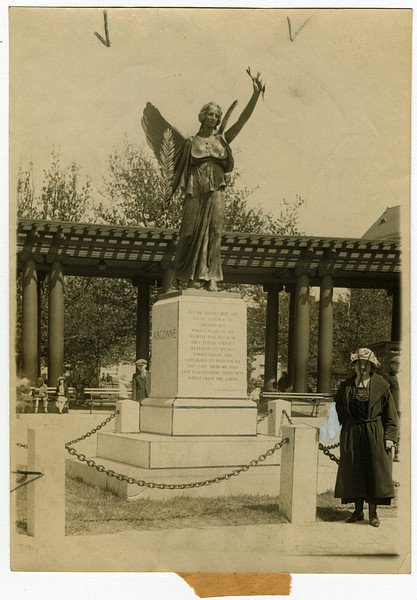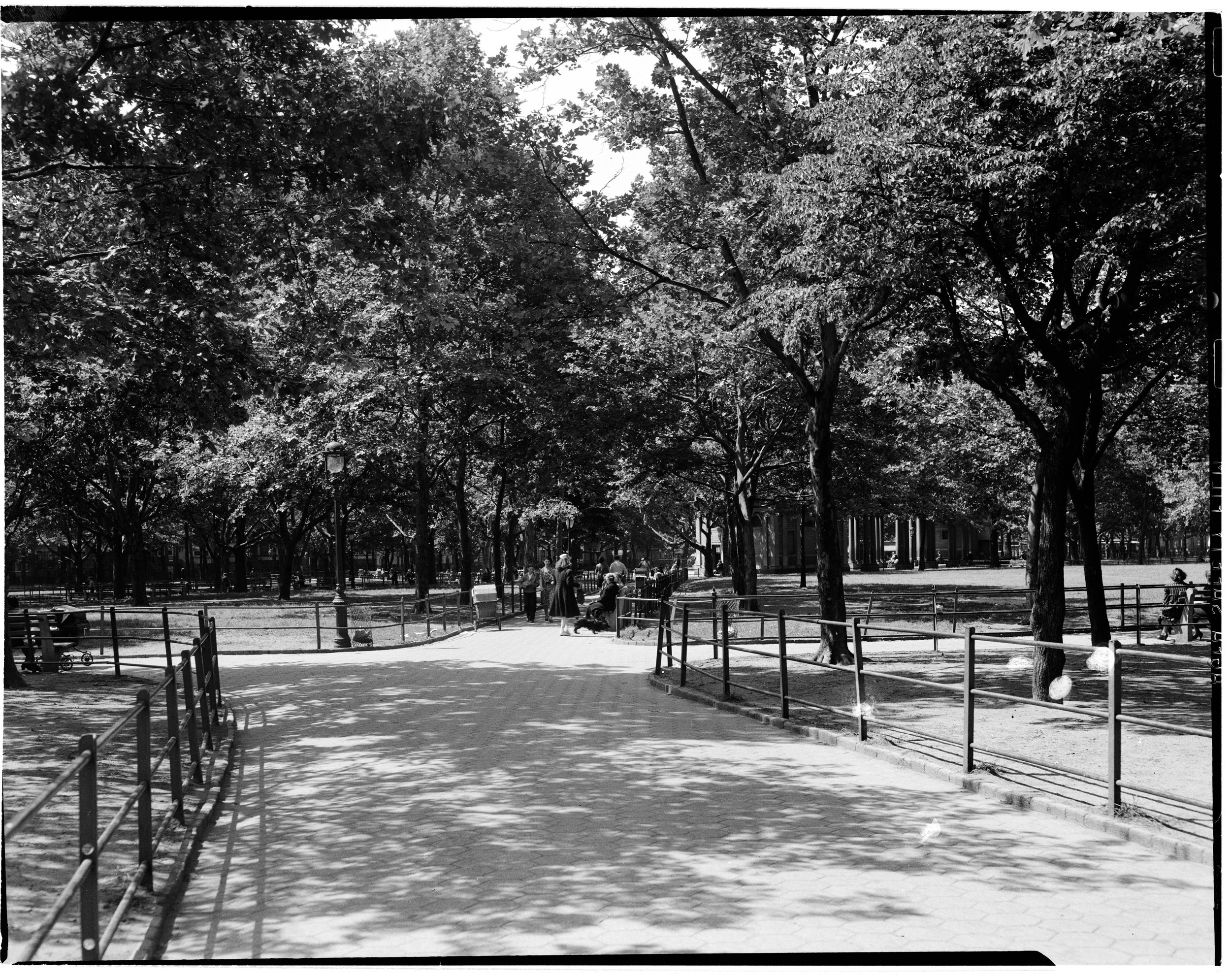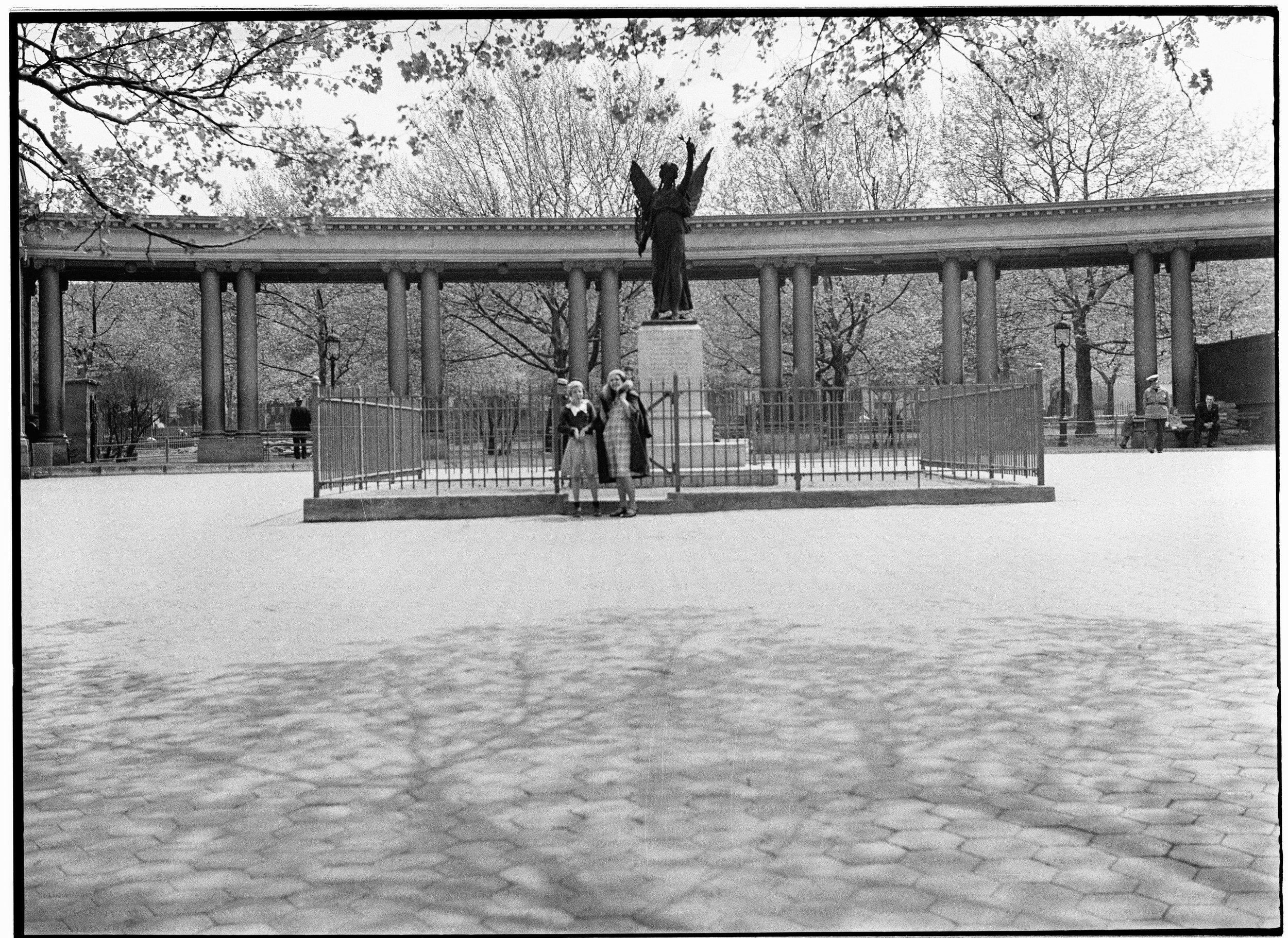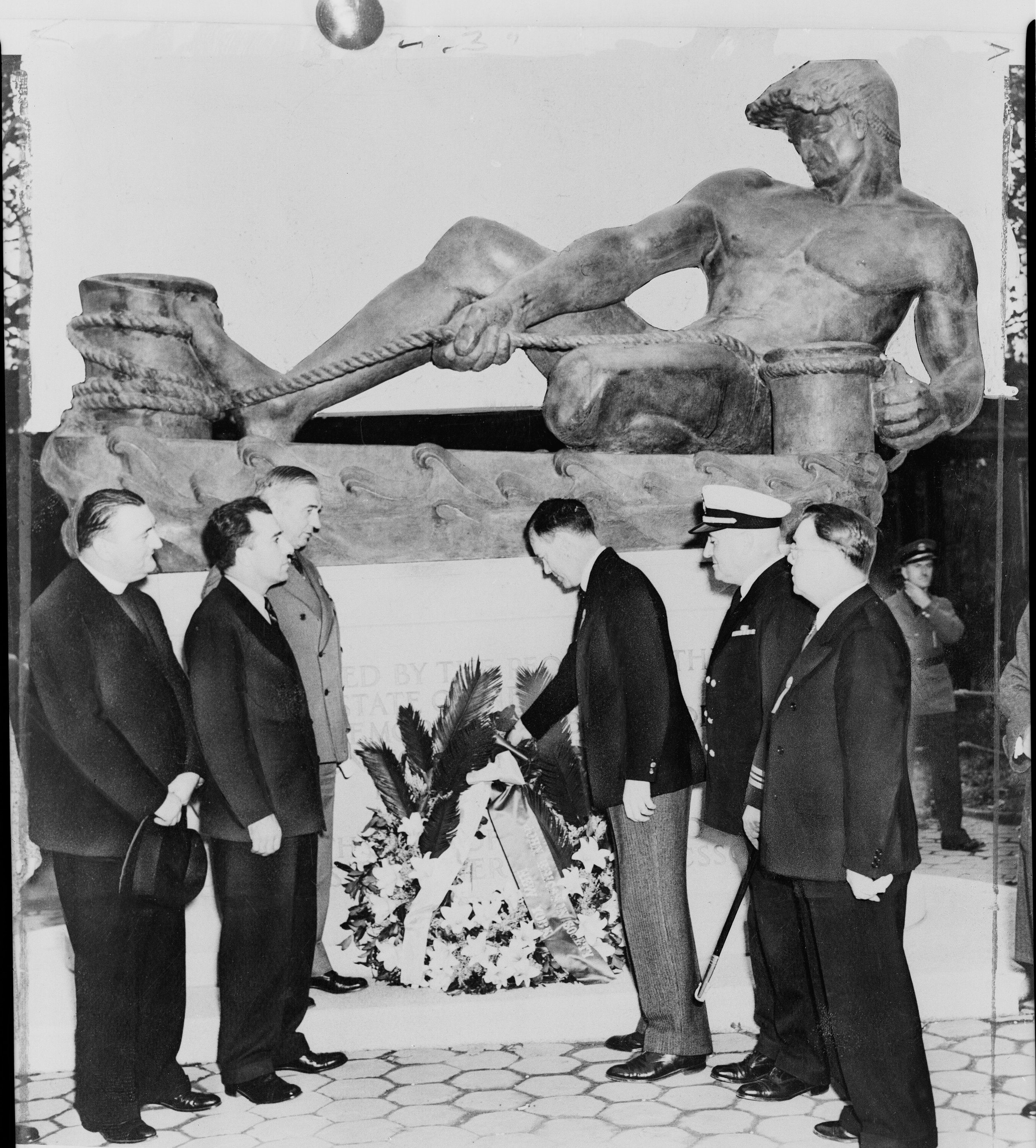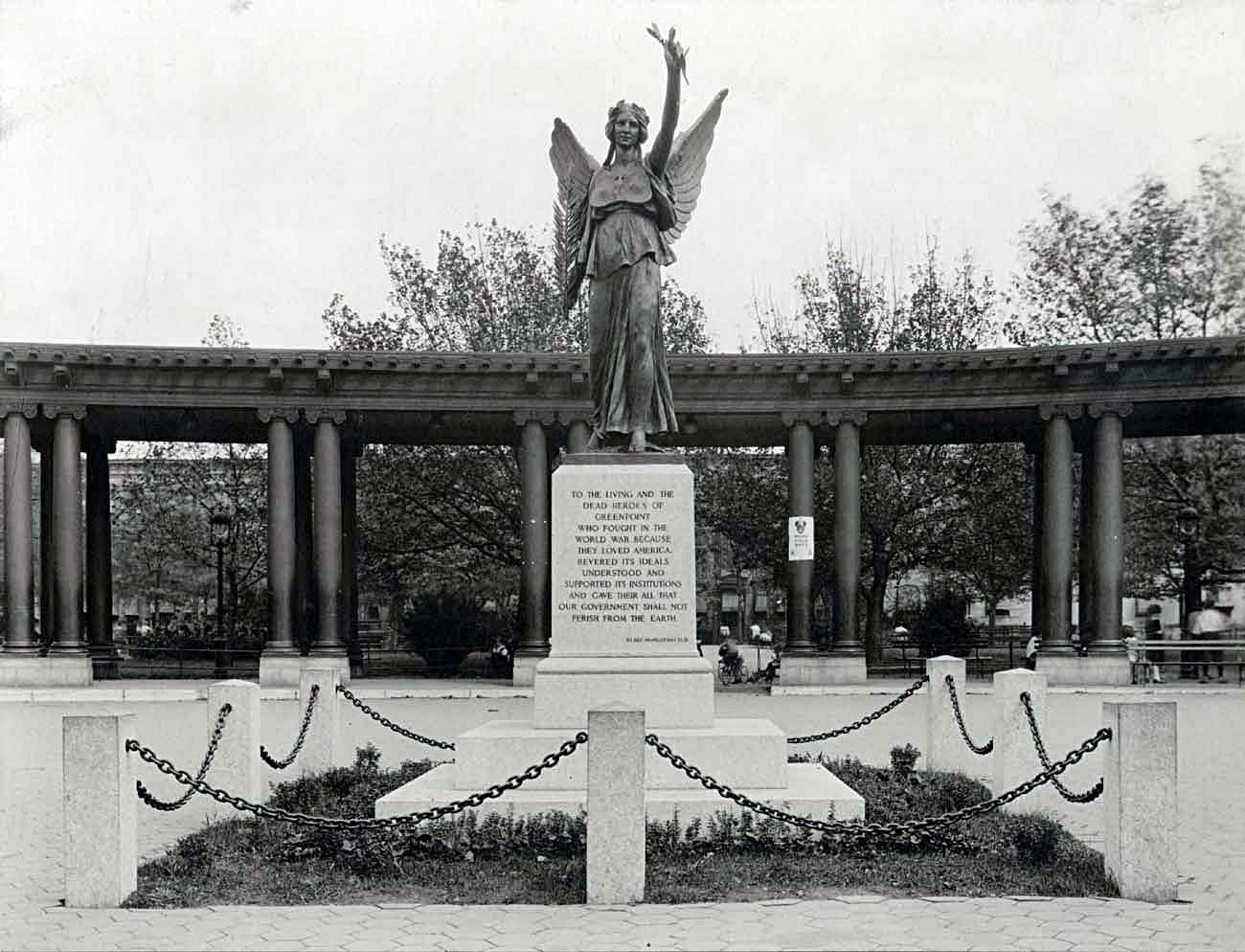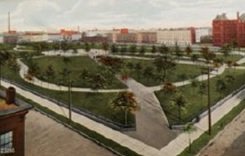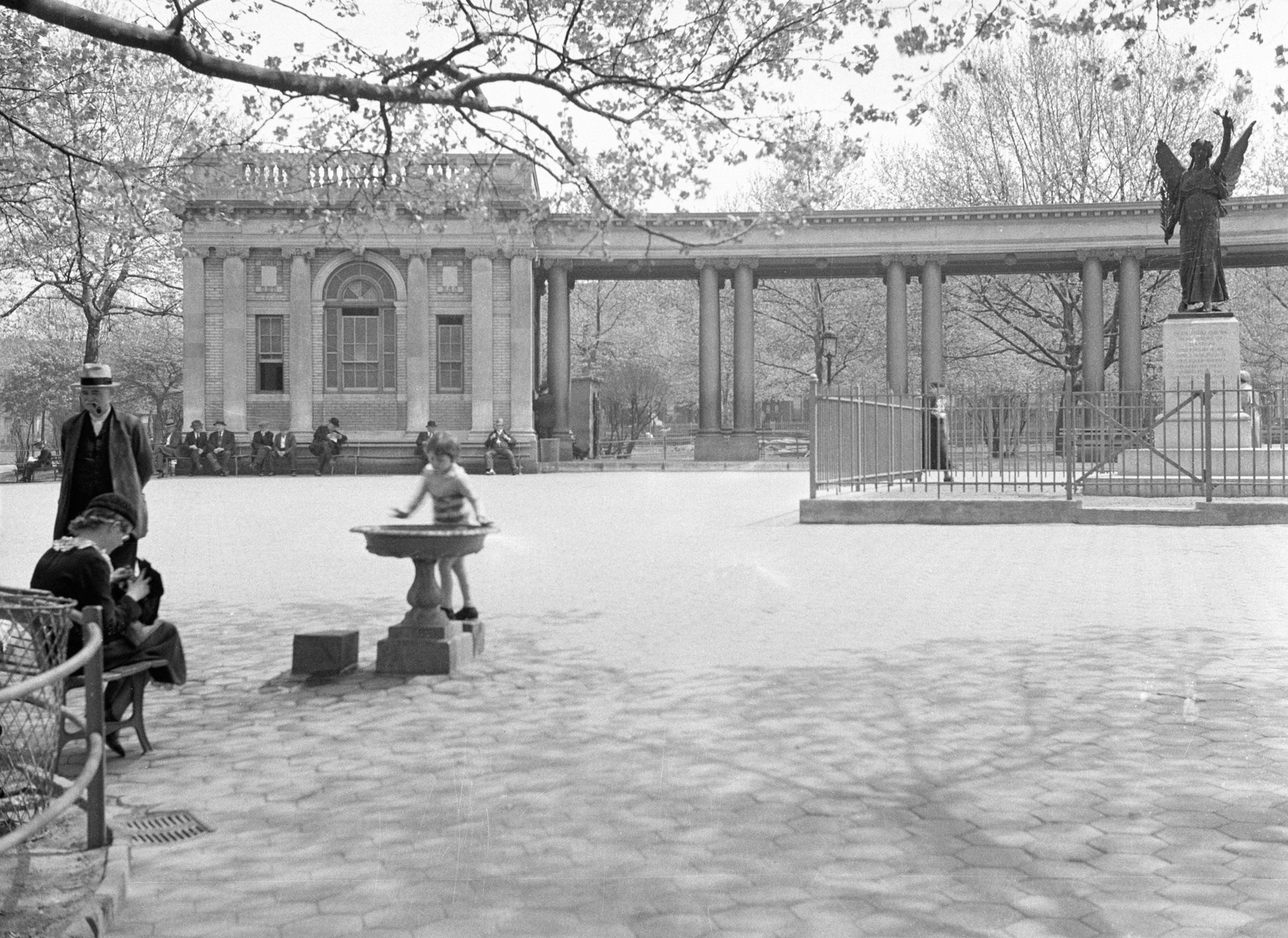
History
McGolrick Park, with its ten acres of London Plane-lined walkways and green space, was once a swampy expanse on Ambrose Kingsland’s farm. Kingsland, a wealthy whale oil merchant and two-term mayor of NYC, sold his workable land, but the swamp was unusable. Notably, Kingsland introduced the legislation that led to the construction of Central Park. In 1889, State Assemblyman Winthrop Jones, a son of the Park Commissioner, orchestrated the purchase of the swamp land, installing costly drainage systems, decorative plantings, new lawns, and, among the first in the nation, sandboxes for children. It was for Winthrop that the park was originally named.
In 1910, the pavilion was added, commissioned by renowned architect Frank Helmle, of the firm Helmle and Huberty. Greenpointers will recognize his other local work, The Greenpoint Savings Bank on Calyer Street and Manhattan Avenue. The limestone and brick structure once contained comfort stations on each side of the open arcade, benches along the exterior, and a concession stand. The pavilion is in the National Register and was named an official New York City Individual Landmark in 1966.
The two iconic statues within the park are memorials to locals who died or worked for the American wars, WWI, and the Civil War. A winged statue in the center of the square honors the legacy of the nearly 150 Greenpoint soldiers who died in WWI. The statue, designed by Carl Augustus Weber in 1923, holds a laurel for victory and a palm frond for peace. On her pedestal are the names of the battles in which the soldiers died in France: Somme/Chateau Thierry, St. Mihiel, and Argonne. Many of the dead were Polish- Americans, the largest demographic of immigrated people in Greenpoint at the outbreak of the war.
The bronze and granite male figure statue, near the entrance on Monitor Street, commemorates the U.S.S. Monitor, and the battle of the Monitor and Merrimack in the American Civil War. In 1938, this statue was commissioned by Antonio de Filippo. It is also called the John Ericsson Memorial, an ode to the Swedish-American engineer who designed the Monitor, America’s first ironclad warship, built on Quay Street in 1862.
Monsignor Edward McGolrick, the heralded Irish-American pastor at St Cecilia’s, served the community of Greenpoint during his 50-year tenure until his death in 1938. From the 1920s to the 1940s, McGolrick built a library, convent, daycare center, maternity hospital, school, playing field, and more within the block of Monitor, North Henry, and Richardson Streets. In 1941, the park was renamed in his memory.
images courtesy of Municipal Archives, City of New York, New York Dept. of Parks, Brooklyn Daily Eagle photographs/brooklyn public library, Brooklyn Historical Society Digital Collections


